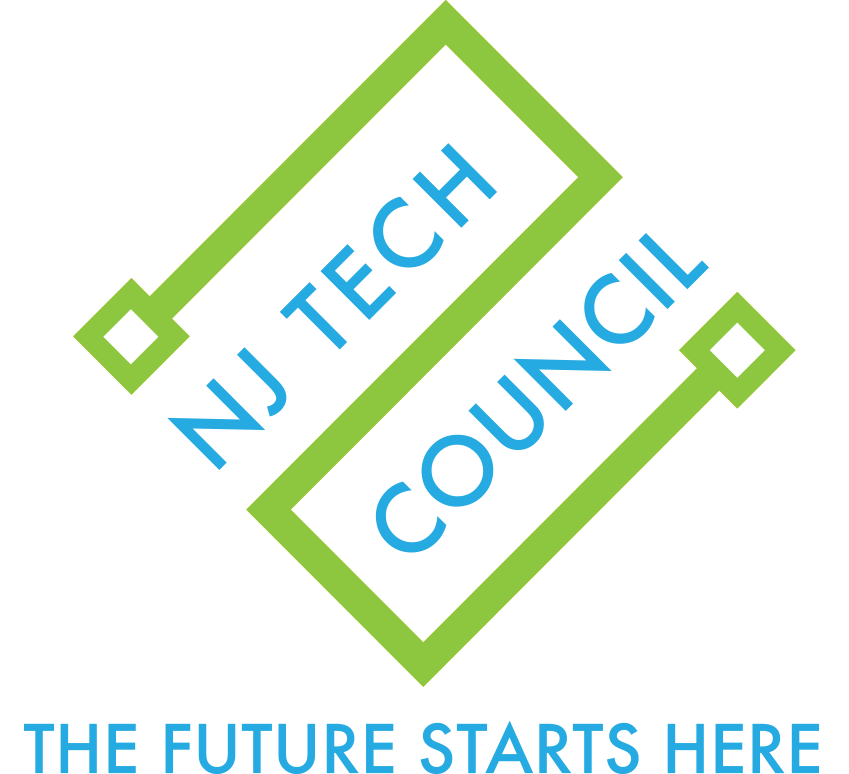
Biopharma’s increasing investment in technological innovations like artificial intelligence (AI) and data science is an important trend to watch for emerging employment opportunities, especially in the drug discovery market.
The exploding practice of using AI to accelerate the drug discovery process is specifically illustrated by both the increasing number of partnerships between pharmaceutical companies and AI startups and the amount of investments pharmaceutical companies are making on internal AI capabilities.
More Partnerships with AI Startups
Pharmaceutical companies have collaborated with AI startups to enhance drug discovery programs in many important ways. As a result of these partnerships, for example, AI has been applied to patient diagnosis and treatment, drug repurposing and even to genomics to discover natural peptides with health benefits. [1] AI is also being leveraged in data mining to find and validate potential cancer drug targets as well as therapeutic targets for neurological diseases. Each are data-rich endeavors with potentially significant medical benefits.
Increasing Investment in Internal AI Capabilities
Because massive volumes of data are created when incorporating AI into drug discovery, pharmaceutical companies will need to restructure their organizations and infrastructures to be able to quickly process, store, access and analyze their research. As a result, pharmaceutical companies are equally growing their internal AI capabilities to be prepared for the AI-driven digital transformation and accelerate time to discovery. Global pharmaceutical companies including Merck, GlaxoSmithKline and Pfizer are in the process of undertaking this change.
Impact on Employment Opportunities
The technological advancements of AI in biopharma not only impacts how pharmaceutical companies operate but also creates a shift in employment opportunities. Although some experts predict that AI advancements will result in a reduction in the labor force over the next fifteen years, we believe the reduction will be accompanied by an expansion of workforce needs in various other areas.
Both organizations and workers alike will have to adapt to the need for more technological and higher cognitive skills created by the adoption of AI in biopharmaceuticals like drug discovery. For example, pharmaceutical companies will increasingly need data analysts and scientists, AI and machine learning (ML) specialists, big data analysts and more.
Is your organization ready to find and employ new skills needed in this AI revolution? Regional Personnel specializes in recruiting services for pharmaceutical, biotech and medical device industries. We match top talent to company culture with a personal and customized approach to every placement. Start a conversation by emailing us at [email protected].
[1] Smith, Simon. “31 Pharma Companies Using Artificial Intelligence in Drug Discovery.” BenchSci. 1 Apr. 2019, www.blog.benchsci.com/pharma-companies-using-artificial-intelligence-in-drug-discovery
James F. Lynch PhD, MBA – Regional Personnel Services ©2019

Are you looking to enter the life sciences job market? There isn’t a more opportune time to launch your career because the industry is booming. If you’re actively seeking an opportunity in life sciences within the United States, focus your search on these hotbed regions as highlighted by BioSpace for innovation, growth and jobs in the life sciences sector:
- Connecticut, New Jersey, New York, Pennsylvania and Rhode Island [Pharm Country]. There are 19,019 life science companies. There are 399,704 life science workers in this highlighted area. The average annual income is $91,214.
- Massachusetts [Genetown]. There are 3,109 life science companies in Massachusetts. There are 69,941 life science workers in this highlighted area. The average annual income is $145,731.
- San Francisco and Northern California [Biotech Bay]. There are 3,418 life science companies in California. There are 99,564 life science workers in this highlighted area. The average annual income is $116,300.
- Delaware, Maryland, Virginia and Washington D.C. [BioCapital]. There are 9,881 life science companies. There are 112,880 life science workers in this highlighted area. The average annual income is $107,193.
- Research Triangle Park and North Carolina [BioNC]. There are 6,227 life science companies. There are 95,231 life science workers in this highlighted area. The average annual income is $84,145.
- San Diego and Southern California [Biotech Beach]. There are 3,418 life sciences companies in California. There are 176,451 life science workers in this highlighted area. The average annual income is $98,162.
- Illinois, Indiana, Iowa, Michigan, Minnesota, Missouri, Nebraska, Ohio and Wisconsin [BioMidwest]. There are 29,865 life science companies. There are 470,228 life science workers in this highlighted area. The average annual income is $145,731.
- Indiana [BioIndiana]. There are 1,689 life science companies in Indiana. There are 56,000 life science workers in this highlighted area. The average annual income is $94,749.
- Idaho, Montana, Oregon and Washington [BioForest]. There are 7,805 life science companies. There are 81,392 life science workers in this highlighted area. The average annual income is $69,737.
James F. Lynch PhD, MBA – Regional Personnel Services ©2019
The impact at the FDA from the government shut, as well as the potential impact to the public, has been running relatively below the radar. Everyone relies on the FDA for safe medicines, food, and animal products. If the FDA is feeling the effects from shutdown, so could the public. In the wake of this lingering shutdown, FDA has been forced to begin to assess its options in order to focus resources on key consumer protection functions. The longer the government shutdown continues, the greater the potential harm to public health. Here are some points to consider:
Currently,
- FDA cannot accept any new drug, biologic, device, or generic applications that require payment of user fees until the shutdown ends.
- FDA cannot accept any new INDs for review (aside from emergency INDs).
- User fees and carryover funding could run out within weeks.
Potential far-reaching results:
- Delayed approvals of life-saving drugs.
- Delayed generic approvals, affecting costs.
- Lower workforce morale potentially causing a mass talent exodus from the agency.
- FDA’s ability to recruit and retain staff being severely impaired.
To read the complete article, please follow link: https://bit.ly/2VXLZVP
To read more about our Leadership, please follow link below.
James F. Lynch PhD, MBA – Regional Personnel Services ©2019
The much anticipated October Jobs Report was recently released by the US Bureau of Labor Statistics (BLS). On a seasonally adjusted basis, total nonfarm employment rose by 250,000 in October, according to the US Bureau of Labor Statistics (BLS) in its monthly jobs report. The gain of 250,000 exceeds the median projection of 200,000 jobs from the Bloomberg survey. Temporary help services employment rose by 0.1% from the prior month, adding 3,300 jobs, and the temporary penetration rate remained roughly flat at 2.04%. The national unemployment rate remained at 3.7%.
Background and Analysis- On a year-over-year (y/y) basis (October 2018 over October 2017), total nonfarm employment was up 1.7%, and monthly job gains have averaged approximately 210,000 over the past 12 months. Temporary help employment was up 2.2% y/y, with monthly job gains averaging approximately 5,500 over the past 12 months.
Of the 15 major industry groups, the three that most drove total nonfarm employment growth in October (on a seasonally adjusted basis) include healthcare and social assistance (+46,700), leisure and hospitality (+42,000), and manufacturing (+32,000). Gains were broad across industries, as there was only one decliner, education (-2,500). On a year-over-year basis, natural resources/mining continued to lead all industry groups in terms of percentage growth, with 9.4%, once again followed by construction and transportation/warehousing, with 4.7% and 3.5% growth, respectively. Information was the one decliner on a y/y basis, down 0.5%.
Wages appear to be gaining traction at last, with y/y growth in average hourly earnings accelerating to 3.1% in October.
BLS Revisions- The change in total nonfarm payroll employment for September was revised from +134,000 to +118,000, and the change for August was revised from +270,000 to +286,000. With these revisions, total nonfarm employment gains during the two-month period were unchanged.
The change in temporary help services employment for September was revised from +10,600 to +7,600, and the change for August was revised from +12,400 to +10,800. With these revisions, temporary help employment growth was less than previously reported by 4,600 jobs.
Staffing Industry Analysts’ Perspective- Regarding total nonfarm employment, this was a favorable jobs report. Even if you take the average of the last two months (to account for the recovery from the impact of Hurricane Florence in the prior month), the employment gain is a moderate 184,000. Moreover, wage growth, the one area that had not been as strong for so many years in this expansion period, appears to be gaining traction at last.
Temporary help employment growth, however, has become increasingly mild, with the temporary penetration rate remaining roughly flat throughout most of this year. Temporary staffing may be reaching a plateau, which would be normal if we are approaching the tail end of an expansion in the business cycle.
James F. Lynch PhD, MBA – Regional Personnel Services ©2018
The national unemployment rate declined to 3.7% from 3.9% in the prior month. However, the U-6, or “underemployment” rate which includes part-time workers who would prefer a full-time position and people who want a job but aren’t actively looking, actually ticked up from 7.4% to 7.5% in September.
See full report at https://lnkd.in/dWWkkeg
James F. Lynch PhD, MBA – Regional Personnel Services ©2018
With the changing times in our economy and especially the labor force, employers must stay keen to the trends of employee preference and needs. As a new generation emerges into the labor force, of course, there is a new trend surfacing with regards to the conventional work schedule. According to recent studies, Millennials desire to embark on a journey of jobs rather than sit at the same desk from 9-5 for the rest of their lives. They want to be a part of an influential team and make positive changes rather than just get credit for showing up in the morning. This desire needs to be captured by employers and used to their benefit. By hiring temporary work from this up and coming millennial generation it will infuse new and creative ideas that can grow a project rather than keep it stagnant. A fresh young mind can bring in a new perspective and revive old static ways to give your project just the boost it needs. And when it comes to employing an efficient and bright workforce, fluidity and interchangeability are key. Therefore if employers can create a diverse and balanced team full of both full-time and temporary personnel they should generally have a greater level of productivity.
Read article:
http://www.forbes.com/sites/singularity/2015/03/27/on-demand-employment-how-todays-workers-are-choosing-journeys-over-jobs/
James F. Lynch PhD, MBA – Regional Personnel Services ©2018
The competition for the best talent is fierce. When salary and benefits are equal, candidates look to the culture, reputation and values of the company. Companies with a strong culture based on a clear set of values, and have taken a leadership role in such areas as environmental responsibility, for example, will develop the best reputation, and will therefore be able to attract the best employees.
A great example is Ingersoll Rand’s initiative across the company’s more than 42,000 employees to increase the awareness of their actions leading to more sustainable workplaces, homes and communities.
Read full article on Ingersoll Rand: http://www.forbes.com/sites/christopherskroupa/2017/06/16/hiring-lackluster-talent-hurts-your-companys-resilience-and-reputation/#5a473b846281
A company’s reputation can be affected by a poor hire, as well: https://regionalpersonnel.com/wrong-hire-costs-part-iii/
James F. Lynch PhD, MBA – Regional Personnel Services ©2018

Worker training is a critical limitation to our long-term economic growth. US needs to make targeted investments in our workforce in various industries through worker training and education to reduce the increasing gap between number of unqualified workers and the increasing number of job openings.
In 2015, federal, state and local governments in the U.S. spent less than a 0.5% of gross domestic product on programs to train those who are or could be in the labor market, the article states. That is less than most other industrialized nations, including Canada, Australia and Germany. In addition, U.S. schools and governments have a mixed record of success in retraining Americans who lost their jobs for new roles.
According to this recent paper, spending on education and training in the U.S. has been mostly focused on people younger than 25 years old. Relatively little is spent during a person’s working life by employers or the government, potentially leaving them without the ideal skill set for modern jobs. Many employers are reluctant to provide that training, fearing competitors will reap the benefits by hiring away their skilled workers.
For complete details, please visit: https://www.wsj.com/articles/without-better-training-u-s-will-fall-short-on-workers-economists-say-1531850521?mod=hp_major_pos12&ns=prod/accounts-wsj
James F. Lynch PhD, MBA – Regional Personnel Services ©2018

As the talent war heats up and companies are struggling to attract and retain millennials, they must keep in mind what matters most to them. Finding an organization that will help them learn, grow and further their careers. More importantly, companies must not simply “advertise” that they provide these, they must embed them into their corporate cultures. When a company accurately reflects its culture, it’s easier to attract the right talent. An employer’s culture and branding strategy should be clearly expressed in its recruiting materials and website, including any videos and social media.
For full article, please see: https://www2.staffingindustry.com/Editorial/Daily-News/Millennials-rank-top-workplaces-helping-workers-grow-is-a-top-factor-46378
Best practices from the top-ranked companies include:
- Provide opportunities for personal growth
- Companies must make a social impact
- Support flexibility & options to perform work differently
- Prioritize health and family
- Offer tuition reimbursement
See our latest search for 2 Directors of Clinical Affairs at: https://regionalpersonnel.com/job/clinical-spine-orthopedic/
James F. Lynch PhD, MBA – Regional Personnel Services ©2018
There are more jobs than people out of work. According to the Bureau of Labor Statistics, in April there were 6.7 million job openings and just 6.4 million available workers to fill them. As the demand grows, however, workers are more confident about moving between employers and talent wars will naturally escalate. April marked the second month in a row that there were more vacancies than available hires, a phenomenon that had not happened before 2018. Despite the mismatch, sizeable wage gains remain elusive, with average hourly earnings up just 2.7 percent over the past year.
The full article: https://www.cnbc.com/2018/06/05/there-are-more-jobs-than-people-out-of-work.html
See new search for:
James F. Lynch PhD, MBA – Regional Personnel Services ©2018








